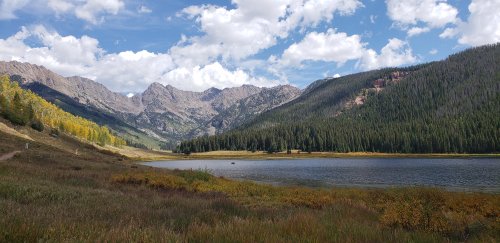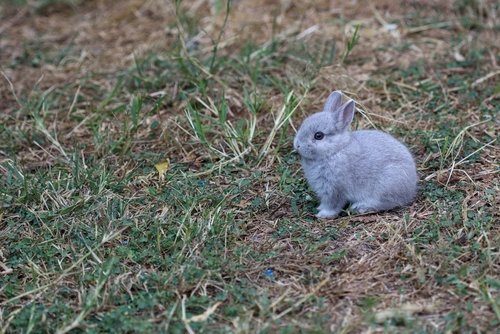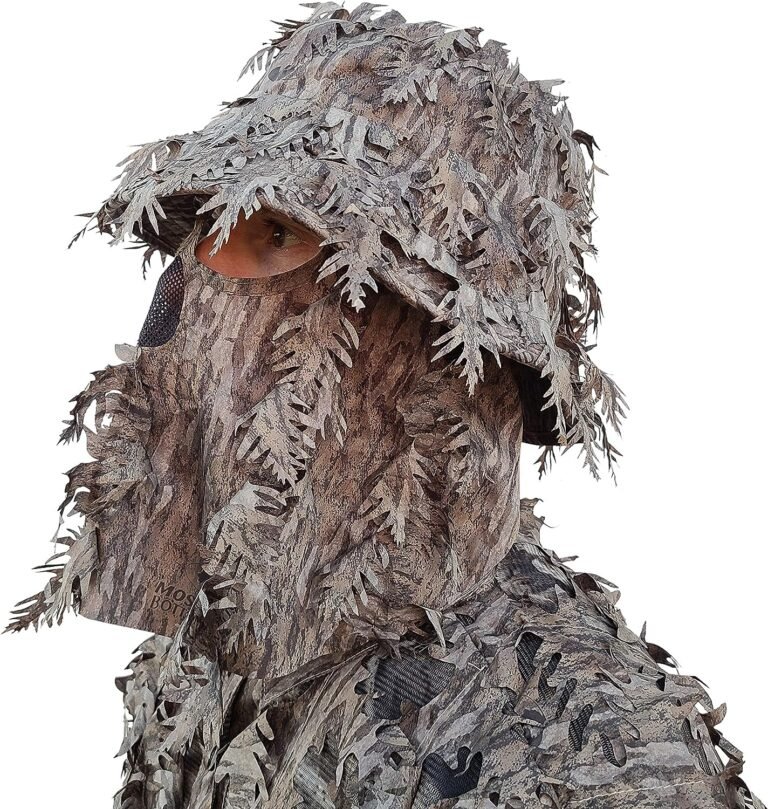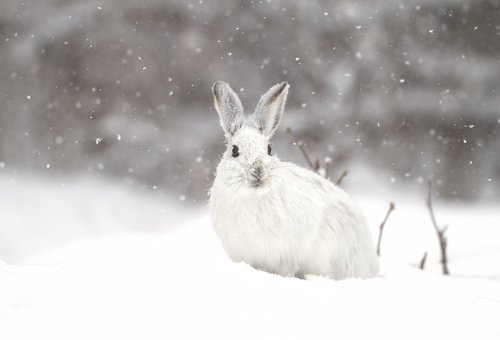Snowshoeing For Beginners: How To Start Your Adventure Now
Introduction to Snowshoeing
Imagine a winter wonderland where crisp white snow blankets the ground as far as the eye can see. The air is chilly, but you’re not deterred because you’ve discovered the magical world of snowshoeing.
If you’re a beginner looking to embark on your first snowy adventure, you’ve come to the right place. In this beginner’s guide to snowshoeing, we’ll cover everything from choosing the right pair of snowshoes to mastering basic techniques and safety tips.
Before we dive into the nitty-gritty of snowshoeing, let’s talk about what it is. Snowshoeing is a fantastic winter activity that allows you to explore and enjoy the great outdoors, even in deep snow.
It’s like hiking but with special footwear called – you guessed it – snowshoes! These remarkable gadgets have been around for centuries and are designed to distribute your weight evenly over a larger surface area, preventing you from sinking into fluffy powder.
Now that we know what snowshoeing is all about let’s tackle the first step: choosing the perfect pair of snowshoes. As a beginner, finding snowshoes that suit your needs and skill level is important.
Different snowshoes are available, ranging from recreational models for flat trails to more advanced ones for steep terrain or backcountry adventures. Consider factors like weight, intended use (e.g., casual walks or challenging hikes), and budget when making this decision.
Once you have your trusty pair of snowshoes in hand (or rather strapped to your feet), it’s time to learn some basic techniques. Walking with snowshoes might feel different at first – think of it as an elegant waltz with Mother Nature herself!
Start by taking small steps and allowing yourself time to adjust. Use poles for balance if needed, and remember to lift your feet a little higher than usual to avoid getting caught in the snow.
With practice, you’ll find your rhythm and sway across snowy landscapes like a pro. Now that we’ve covered the essentials of starting snowshoeing, it’s time to address safety.
As with any winter sport, it’s crucial to prioritize your well-being. Check weather conditions before heading out and tell someone about your plans and expected return time.
Dress in layers to stay warm while allowing for ventilation as you exert yourself. Carry essential items such as water, snacks, a map or compass, and a first aid kit just in case.
And remember, taking breaks when needed is perfectly fine – catching your breath while admiring breathtaking winter vistas is all part of the experience! Snowshoeing is a fantastic way to embrace the beauty of winter while staying active and exploring nature’s snowy playgrounds.
Now armed with beginner know-how on snowshoes, you’re ready to embark on unforgettable adventures through frosty forests and mountain trails. So strap on those snowshoes, grab your poles, and prepare for a journey into the heart of winter wonderland!
Choosing Your First Pair of Snowshoes
Choosing Your First Pair of Snowshoes When it comes to your snowshoeing adventure, selecting the right pair of snowshoes is crucial. They are your trusty companions throughout your winter exploits, so finding ones that suit your needs and abilities is important.
As a beginner, you’ll want to consider a few key factors before purchasing; think about the terrain you’ll be exploring.
Are you planning on sticking to flat trails or venturing into more rugged terrain? The type of snowshoe you choose will depend on the conditions you expect to encounter.
Recreational snowshoes are a great choice for beginners who plan on mainly sticking to groomed trails or gentle slopes. They are lightweight, easy to maneuver, and provide excellent traction.
Next, consider your weight and the weight of any additional gear you’ll be carrying. Snowshoes have weight recommendations that you need to take into consideration.
If you’re unsure which size to choose, check the manufacturer’s guidelines or consult a knowledgeable salesperson at an outdoor equipment store. Binding systems also play an important role in your overall snowshoeing experience.
Look for bindings that offer good support and stability while providing ease of use. Many modern snowshoes come with quick-release or ratchet-style bindings that can be easily adjusted even with gloved hands—a huge bonus during chilly winter outings!
Think about any future aspirations in the world of winter sports. More technical models might be worthwhile if you’re only dipping your toes into snowshoeing but foresee yourself progressing further into backcountry adventures or steep terrains.
These models often have features that feature climbing steeper slopes or crampons for enhanced traction on icy surfaces. Remember, as a beginner embarking on their first snowshoeing journey, you must note equipment you may not fully utilize.
Start with a well-fitting, comfortable, versatile pair of snowshoes that suits your immediate needs. This way, you’ll enjoy Wonderland while mastering the beginner’s guide to snowshoeing without worrying about unnecessary complications.
Essential Snowshoeing Techniques for Beginners
When it comes to snowshoeing, beginners may feel intimidated by the thought of strapping on those oversized shoes and venturing into the winter wonderland. But fear not, my fellow rabbit hunters!
I’m here to share some essential techniques that will have you gliding across the snowy landscape like a pro in no time. First and foremost, mastering the art of balance is crucial for any beginner snowshoer.
With those big bulky shoes on your feet, it’s easy to feel a bit unsteady at first. Start by taking small steps and getting used to the sensation of walking with snowshoes.
Focus on keeping your weight centered over your feet and maintaining an even stride. Remember, slow and steady wins the race!
Gracefully navigating uphill slopes is one technique that can greatly enhance your snowshoeing experience. When faced with an incline, take shorter steps and lean slightly forward to maintain traction.
Digging the crampons on the underside of your snowshoes into the snow will provide excellent grip as you climb. Remember not to rush; take breaks whenever necessary and allow time to catch your breath while enjoying the breathtaking winter scenery.
Now let’s talk about going downhill – one of the most exhilarating aspects of snowshoeing! When descending slopes, it’s important to maintain control and prevent yourself from tumbling headfirst into a snowy abyss.
Lean backward slightly, keeping your weight centered over your heels instead of leaning forward as you would when climbing uphill. Use the edges of your snowshoes for stability by angling them diagonally across the slope while taking small, deliberate steps.
Let’s not forget about turning! Mastering this technique will help you maneuver through twisting trails without stumbling or tripping over yourself (we’ve all been there!).
To execute a smooth turn while wearing snowshoes, shift your weight onto one foot while pivoting the opposite foot in the direction you want to go. Use your poles for additional balance and stability, planting them firmly into the snow as you make your turn.
By incorporating these essential techniques into your snowshoeing repertoire, you will gain confidence, improve your balance, and fully embrace the joys of winter exploration. Remember, practice makes perfect, so don’t be discouraged if it takes a few attempts to get it just right.
Before you know it, you’ll be gliding through powdery trails effortlessly and experiencing the sheer delight of this fantastic winter sport. So grab those snowshoes, and let’s embark on an unforgettable snowy adventure!
Safety Tips for Snowshoeing Adventures
When embarking on snowshoeing adventures, it’s crucial to prioritize safety. While this winter sport may seem relatively easy and straightforward, there are essential safety tips that beginners should keep in mind to ensure an enjoyable and accident-free experience. So, before strapping on your snowshoes and hitting the trails, here are some valuable safety pointers to remember.
First and foremost, it’s important to check the weather conditions before heading out. Winter weather can be unpredictable, with sudden storms or extreme cold snaps that can pose serious risks for snowshoers.
Always consult reliable sources for weather updates and forecasts specific to your snowshoeing location. Additionally, be aware of any avalanche risks in the area you plan to explore.
Another vital aspect of staying safe while snowshoeing is informing others about your plans. Before setting off on your adventure, let someone trustworthy know where you’ll be going and when you expect to return.
This way, in case of an emergency or if you encounter unforeseen challenges on the trail, someone will have knowledge of your whereabouts. Furthermore, dressing appropriately for winter conditions is crucial for both comfort and safety during your snowshoeing excursion.
Layering is key: wear moisture-wicking base layers that trap heat close to your body and insulate mid-layers such as fleece or down jackets. Don’t forget a waterproof outer layer like a windbreaker jacket or pants to protect yourself from wetness and wind chill.
In addition to clothing choices, proper footwear is essential for a safe snowshoeing experience. Invest in waterproof boots with good traction designed specifically for winter hiking or snow sports like snowshoeing.
These boots will provide the necessary support and grip on snowy terrain while keeping your feet warm and dry throughout the adventure. Remember these tips before venturing into this wonderful winter activity!
By considering factors like weather conditions, notifying someone about your plans, dressing appropriately in layered clothing, and ensuring appropriate footwear, you’ll be well-prepared to confidently embrace the snowy trails. Snowshoeing can be an incredibly rewarding and enjoyable experience when done safely, allowing you to fully immerse yourself in the beauty of winter landscapes while staying protected.
Best Trails for Beginner Snowshoers
When it comes to exploring the great outdoors during the winter months, snowshoeing is one of the most accessible and enjoyable activities for beginners. With a pair of sturdy snowshoes, you can venture off the beaten path and discover a whole new world of winter wonder.
But where should you go for your very first snowshoeing adventure? Here are some fantastic trails that are perfect for beginner snowshoers.
Piney Lake Trail in Colorado
Check out the Piney Lake Trail near Vail if you are in Colorado.
This trail offers breathtaking views of the surrounding mountains and is relatively flat, making it ideal for those just starting their snowshoeing journey. As you trek through pristine forests and open meadows, keep an eye out for wildlife tracks in the fresh powder – you never know what furry friends might be nearby!

Avalanche Lake Trail in Montana
For a truly magical experience, head to Glacier National Park and embark on the Avalanche Lake Trail.
This trail winds through a winter wonderland of towering trees coated in glistening ice crystals. The trail gently ascends along frozen creeks before opening up to reveal a stunning frozen lake surrounded by dramatic peaks. It’s like stepping into a scene from a fairy tale!
Paradise Meadows Loop in British Columbia
Located on Vancouver Island, Paradise Meadows Loop is another excellent choice for beginner snowshoers seeking beautiful scenery and gentle terrain. This loop trail takes you through old-growth forests draped with sparkling icicles while offering panoramic views of Strathcona Provincial Park’s majestic mountains.
Don’t forget your camera – there will be plenty of opportunities to capture stunning winter landscapes.
Skyline Trail in Alberta
In Jasper National Park, the Skyline Trail offers an unforgettable snowshoeing experience with jaw-dropping vistas at every turn. The trail takes you along ridgelines adorned with snowy trees and opens up to reveal sweeping views of the Canadian Rockies.
It’s a moderate trail that requires a bit more endurance, but the reward is well worth it. Make sure to check current trail conditions before embarking on this adventure.
Remember, when snowshoeing on these beginner-friendly trails, always be prepared with proper clothing and equipment. Layer up to stay warm and dry, wear waterproof boots, and bring snacks and water for energy.
Check local weather conditions and trail reports before heading out, as conditions can change rapidly in mountainous regions. And most importantly, have fun!
Snowshoeing is not just a winter sport; it’s an opportunity to connect with nature and discover the beauty of the winter landscape at your own pace. So grab your snowshoes and embark on your first snowy adventure – you won’t regret it!
Dressing for Snowshoeing Success
Dressing for Snowshoeing Success When it comes to snowshoeing, dressing appropriately is key to ensuring a successful and enjoyable experience. The cold winter weather can be unforgiving, but with the right gear, you can conquer any snowy trail like a pro.
Here are some essential tips on how to dress for snowshoeing: Layering is the name of the game when it comes to dressing for winter sports like snowshoeing.
Start with a moisture-wicking base layer that will keep sweat away from your body and help regulate your temperature. Avoid cotton as it tends to retain moisture, which can make you feel colder.
Instead, opt for synthetic materials or merino wool for optimal warmth and comfort. Choose an insulating garment for the middle layer, such as a fleece or down jacket.
This layer will trap heat close to your body while allowing moisture to escape. Look for jackets with good insulation properties and ensure they are breathable so you don’t feel sweaty and uncomfortable.
The outer layer is crucial for protecting yourself from wind, snow, and even rain if you encounter any unexpected weather changes during your snowshoeing adventure. A waterproof and windproof shell jacket and pants are essential in keeping you dry and shielded from the elements.
Look for garments with sealed seams and adjustable cuffs or hems to prevent any water or cold air from seeping in. Don’t forget about your extremities!
Keeping your hands, feet, head, and neck warm is vital in ensuring overall comfort while out on the trails. Invest in quality thermal gloves or mittens that provide insulation without compromising dexterity.
Thick wool socks are ideal for keeping your feet warm inside your snowshoes and preventing blisters. Don’t underestimate the importance of proper accessories like a warm hat or beanie to cover your head, neck gaiters or scarves to protect against wind chill on your neck, and goggles or sunglasses to shield your eyes from snow glare.
These small additions can make a world of difference in your comfort and enjoyment during your snowshoeing adventures. Everyone’s preferences and tolerance to cold may vary, so adjust your layers accordingly.
It’s always better to dress slightly warmer than you think you’ll need, as you can shed layers if necessary. Stay comfortable and enjoy the beauty of winter with the right clothing choices for your snowshoeing escapades!
Basic Snowshoeing Movements and Techniques
Basic Snowshoeing Movements and Techniques
When it comes to snowshoeing, understanding the basic movements and techniques is crucial for an enjoyable and safe winter adventure. Whether you’re a beginner or just a refresher, mastering these skills will have you gliding through the snow like a pro in no time. First things first, let’s talk about walking in snowshoes.
Unlike regular hiking, snowshoeing involves a wider stance to prevent your feet from tripping over each other. Take wider steps than usual to accommodate your snowshoes’ added width. As you walk, keep your feet parallel and maintain an even stride. This will help distribute your weight evenly across the surface area of the snowshoes, preventing them from sinking too deep into the fluffy white stuff.
When ascending hills or inclines, employing a technique called “kicking steps” can be incredibly useful. With each step, lift your foot higher than usual and stomp down on the packed snow to create a foothold. This will give you better traction as you climb uphill. Additionally, using trekking poles can provide stability and support during steep ascents.
On the flip side, when descending hills or navigating downhill sections on your winter adventure, it’s essential to practice controlled movements. Lean slightly backward while bending your knees to maintain balance and prevent sudden falls.
Slowly step down with each foot, allowing gravity to assist with your descent while maintaining control over your speed. Another important technique to master is traversing slopes gracefully.
Moving Laterally
When moving laterally across hillsides (also known as side-hilling), angle yourself across the slope rather than walking straight up or down it. This position allows for better weight distribution across both feet and minimizes slipping or sliding on uneven terrain.
Remember that practice makes perfect when it comes to mastering these basic movements and techniques of snowshoeing! Start with easy, flat terrain before venturing onto more challenging trails.
Take your time to develop a rhythm and familiarize yourself with your snowshoes’ grip and maneuverability. With experience, you’ll gain confidence in navigating various winter landscapes and enjoy the beauty of snowshoeing to its fullest.
Understanding the fundamental movements and techniques of snowshoeing is key to a successful winter adventure. From walking with a wide stance to kicking steps on uphill climbs and practicing controlled descents, these skills will enhance your experience on the snowy trails.
Don’t forget to practice traversing slopes by angling across them for better stability. So grab your snowshoes, embrace the winter wonderland, and let these basic techniques guide you through an exhilarating journey into the world of snowshoeing!
Navigating and Reading the Snowscape
When it comes to snowshoeing, navigating and reading the snowscape is an essential skill that will enhance the overall experience. As a beginner, understanding how to interpret the conditions of the snow can make a world of difference in terms of safety and enjoyment. This section will dive into some key tips and techniques for navigating snowy terrain.
One crucial aspect to consider while navigating is identifying different types of snow. The snow conditions can vary greatly depending on factors such as temperature, wind patterns, and recent precipitation.
Familiarize yourself with terms like powder (loose, dry snow), packed powder (compacted but not icy), or crust (firm layer formed on top due to thawing and refreezing). Each type requires a slightly different approach regarding for regarding and weight distribution.
Another important skill for navigating the snowscape is learning how to read tracks left by other hikers or animals. Snowshoe tips often suggest observing the depth and shape of footprints to determine the firmness of the underlying snow layer.
It indicates softer or deeper snow if you notice deep imprints or sinking with each step. Conversely, if you observe shallow tracks or minimal sinking, it suggests firmer conditions.
Terrain features also play a significant role in navigation while snowshoeing. Keep an eye out for distinctive landmarks such as trees, rocks, or other notable objects that can serve as reference points along your route.
By memorizing these features before setting out on your winter hike and periodically checking them during your journey, you can maintain a sense of direction even if visibility becomes limited due to falling snow. When exploring unfamiliar areas, consider utilizing maps and compasses specifically designed for winter sports or hiking trails.
These resources provide valuable information about elevation changes, potential hazards like steep slopes or avalanche zones, and alternative routes within the trail system. By honing your ability to navigate and read the snowscape, you will be able to confidently explore new territories and ensure your safety during your winter adventures.
Remember, practice makes perfect, so take every opportunity to apply these snowshoeing techniques on various terrains and snow conditions. Happy exploring!
Joining Snowshoeing Groups and Communities
Joining Snowshoeing Groups and Communities When it comes to snowshoeing, there’s no need to trek through the winter wonderland alone. Joining snowshoeing groups and communities can enhance your experience and provide you with a network of fellow enthusiasts.
Whether you’re a beginner or have some experience, these communities offer many opportunities to connect, learn, and explore. One of the best ways to dive into the snowshoeing world is by joining local snowshoe clubs or organizations.
These groups are usually comprised of passionate individuals who share a love for winter sports and outdoor activities. They organize regular outings, group hikes, and even educational workshops for beginners.
Being part of such a club allows you to meet like-minded individuals and provides invaluable guidance from experienced members who are more than willing to share their snowshoe tips and tricks. Another excellent option for connecting with fellow snowshoers is through online forums and communities dedicated to winter hiking basics and how-to snowshoe guides.
These platforms offer virtual spaces where you can ask questions, seek advice, or discuss anything related to snowshoes and winter adventures. From equipment recommendations to trail suggestions, these online communities are brimming with valuable information shared by both beginners starting their snowshoe journey and seasoned experts.
If you’re looking for a more immersive experience that combines socializing with outdoor exploration, consider participating in organized events such as guided snowshoe tours or races. These events often unite individuals from different backgrounds who share a common love for this fantastic sport.
You will get the chance to challenge yourself physically on exciting trails and make lasting connections with people who may become lifelong adventure buddies. Don’t forget about social media platforms when it comes to connecting with fellow snowshoers.
Many outdoor enthusiasts form dedicated groups on platforms like Facebook or Instagram, where they share their snowshoeing stories, photos, and experiences. These online communities can be a great source of inspiration, motivation, and camaraderie.
By joining these groups, you’ll have access to a global network of passionate snowshoers willing to offer advice or even plan group outings if you’re lucky enough to find fellow enthusiasts in your area. Embarking on a snowshoeing journey is made even more enjoyable by becoming part of the vibrant snowshoeing community.
By joining local clubs or organizations, engaging with online forums and communities, participating in organized events, and connecting through social media platforms, you’ll expand your knowledge and forge lasting friendships with people who share the same passion for this exhilarating winter sport. So put on those snowshoes and dive headfirst into the wonderful world of snowshoeing with your newfound companions!
Conclusion
Snowshoeing is a fantastic winter activity combining nature’s beauty with the thrill of exploration. Following this beginner’s guide and learning the winter hiking basics, you can easily embark on snowshoeing adventures.
Remember to choose the right snowshoes for your needs and terrain, as they are essential in providing stability and flotation on snow-covered trails. As you venture into this winter sport, remember the safety tips we shared earlier.
Dress appropriately in layers to stay warm and dry while considering factors like wind chill and potential moisture. Don’t forget to bring essentials such as a backpack with water, snacks, extra clothing, a map or compass, and a headlamp for added safety.
While learning basic snowshoeing movements and techniques may take some practice initially, it will become second nature once you get comfortable with them. Practice walking uphill using small steps or sidestepping to maintain balance.
When descending slopes or traversing difficult terrain, use your poles for stability and consider taking wider steps to distribute weight evenly. One of the great aspects of snowshoeing is that it allows you to explore various trails.
Take advantage of this by researching beginner-friendly routes or snowshoeing groups in your area. They provide valuable guidance and create an opportunity for community building and shared experiences.
By embracing the wonders of snowshoeing by learning how to do it properly and following these beginner-friendly tips—like choosing suitable equipment and dressing appropriately—you’ll be well-equipped to enjoy all that winter has to offer. So bundle up, grab your gear, step outside into a dazzling snowy landscape filled with endless possibilities, and let your journey into the world of snowshoeing begin!






